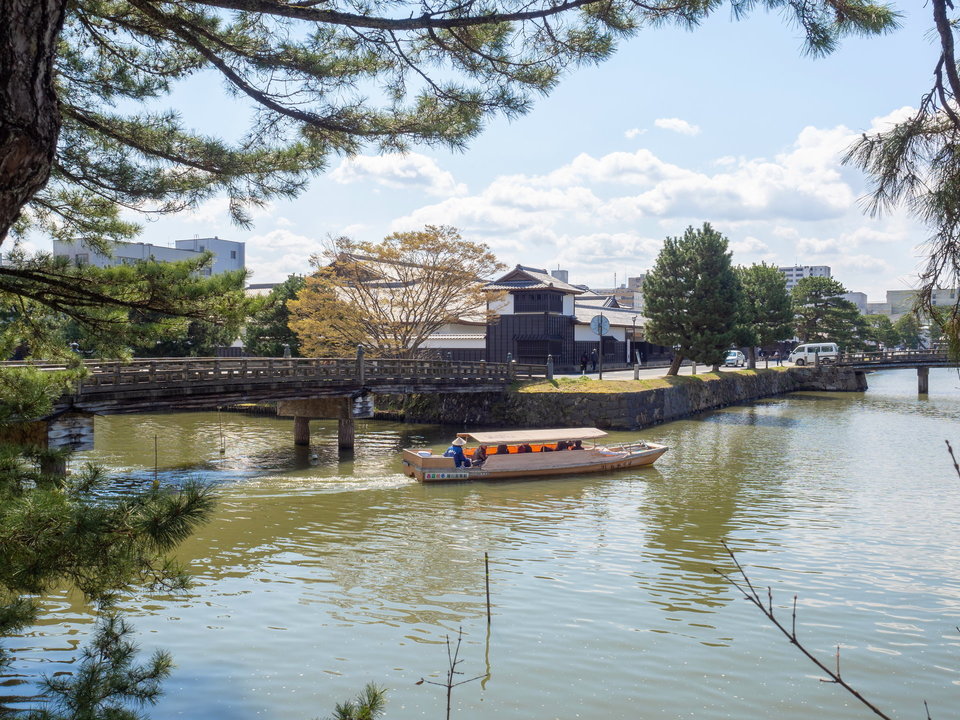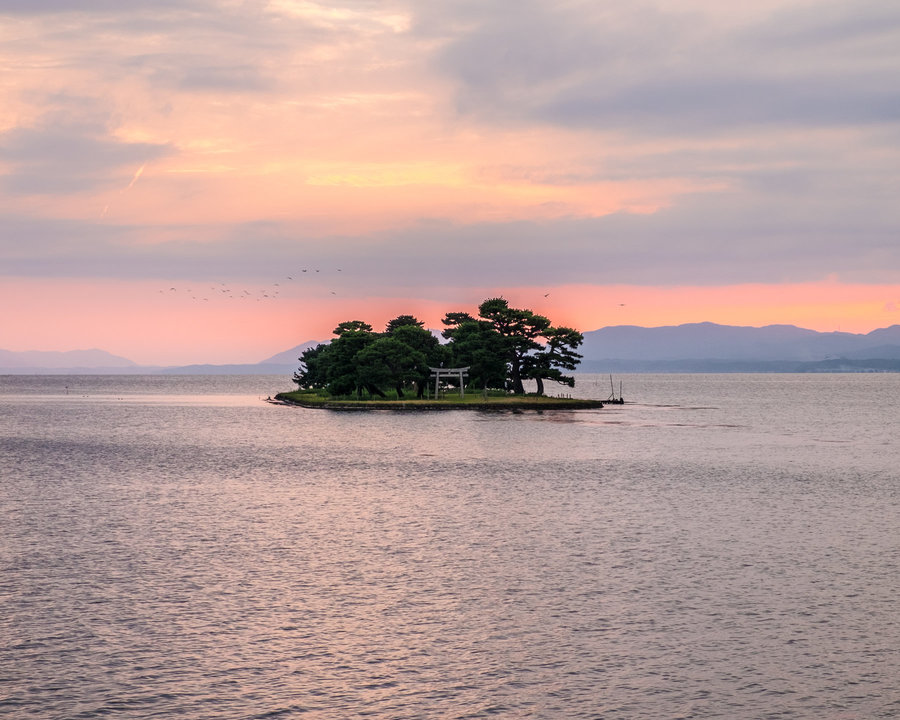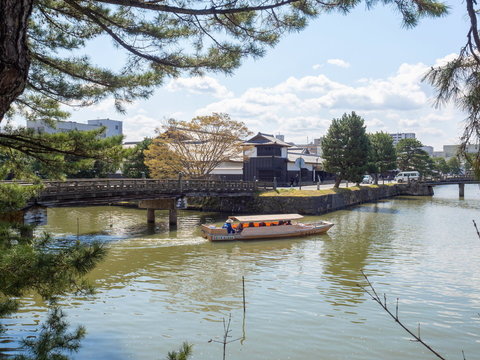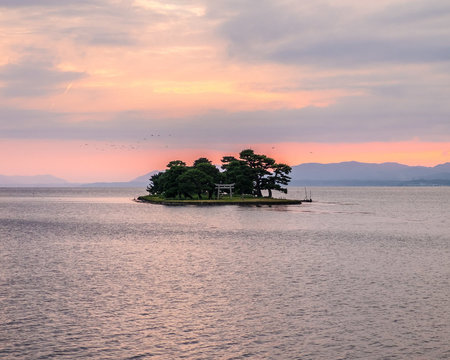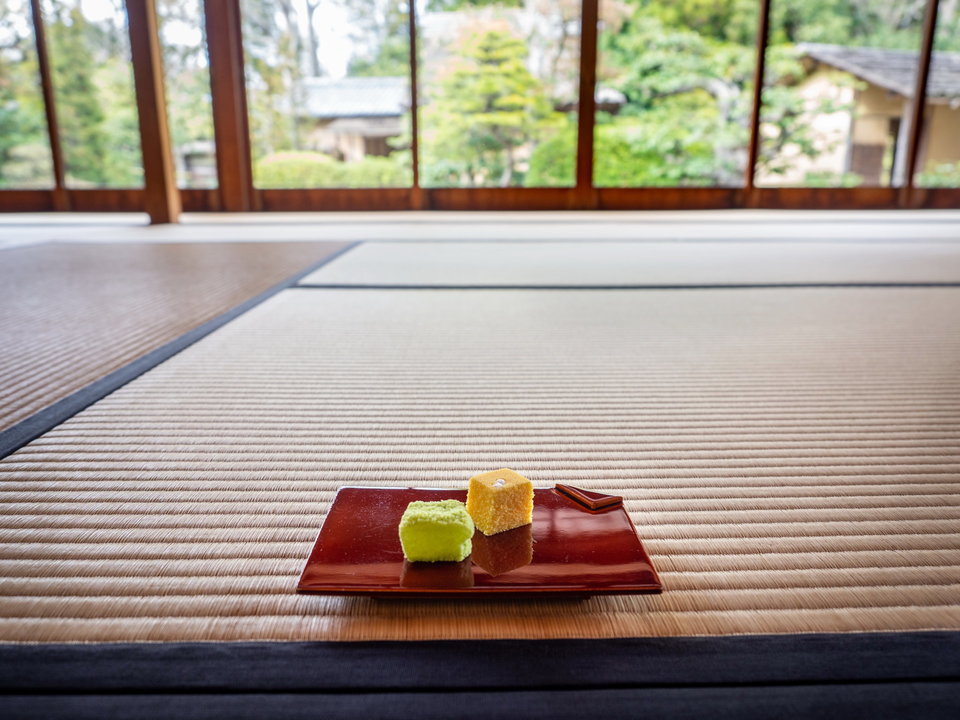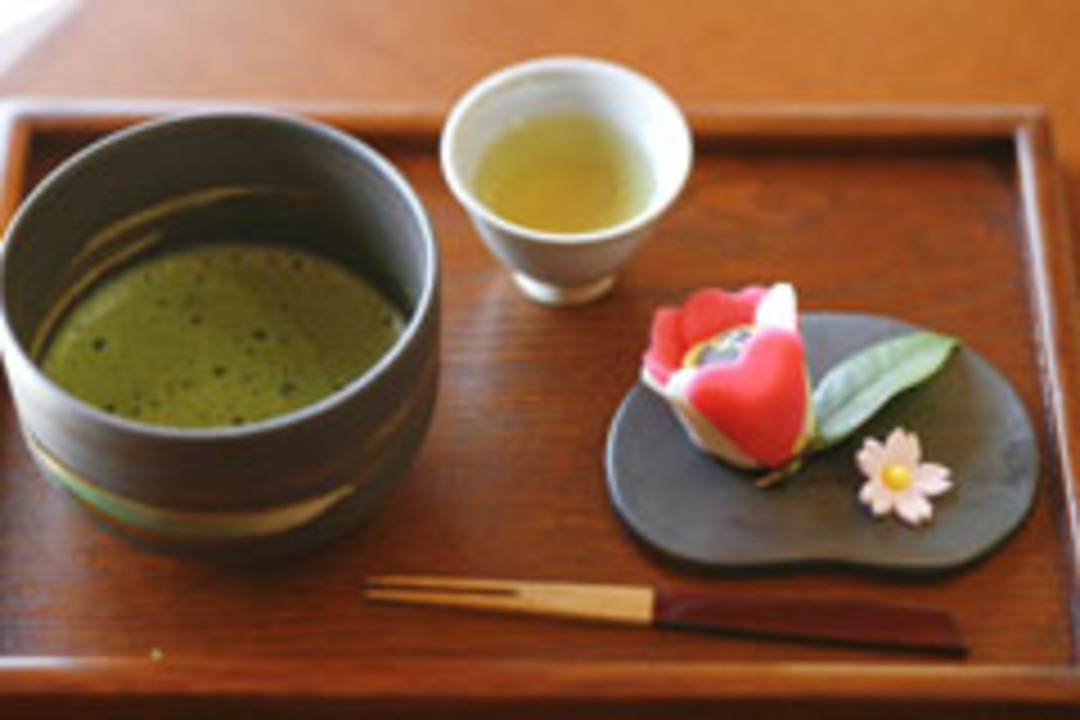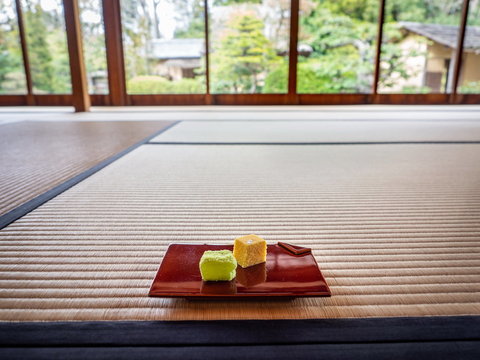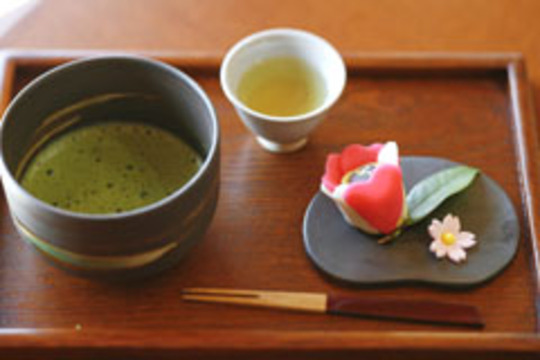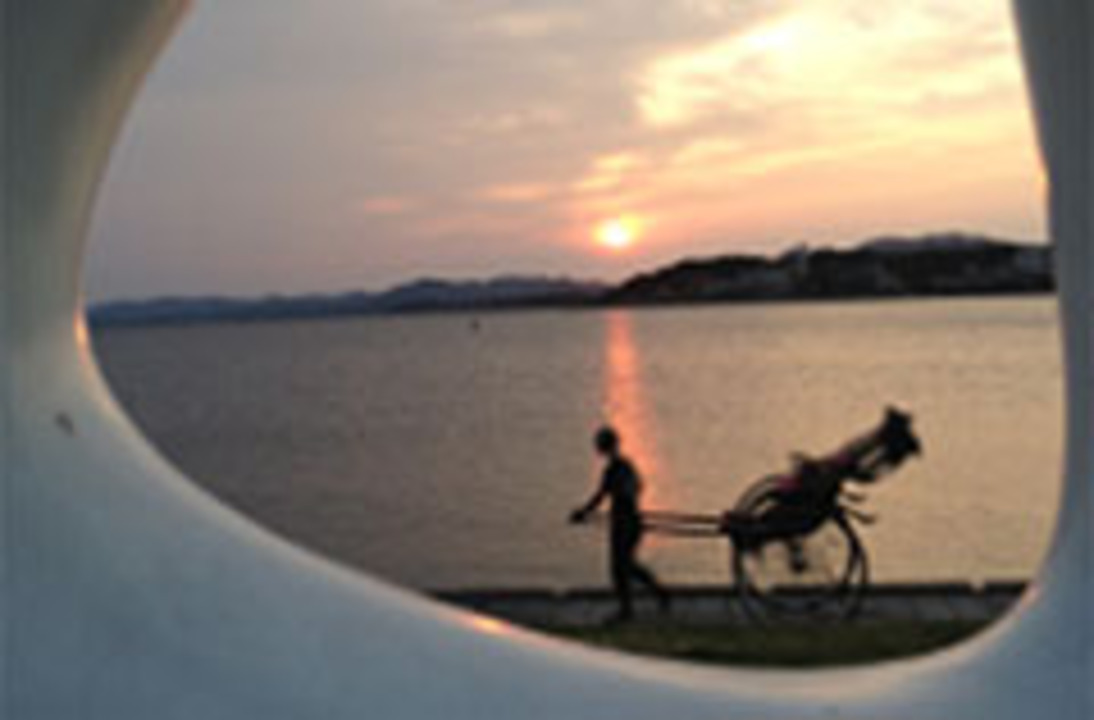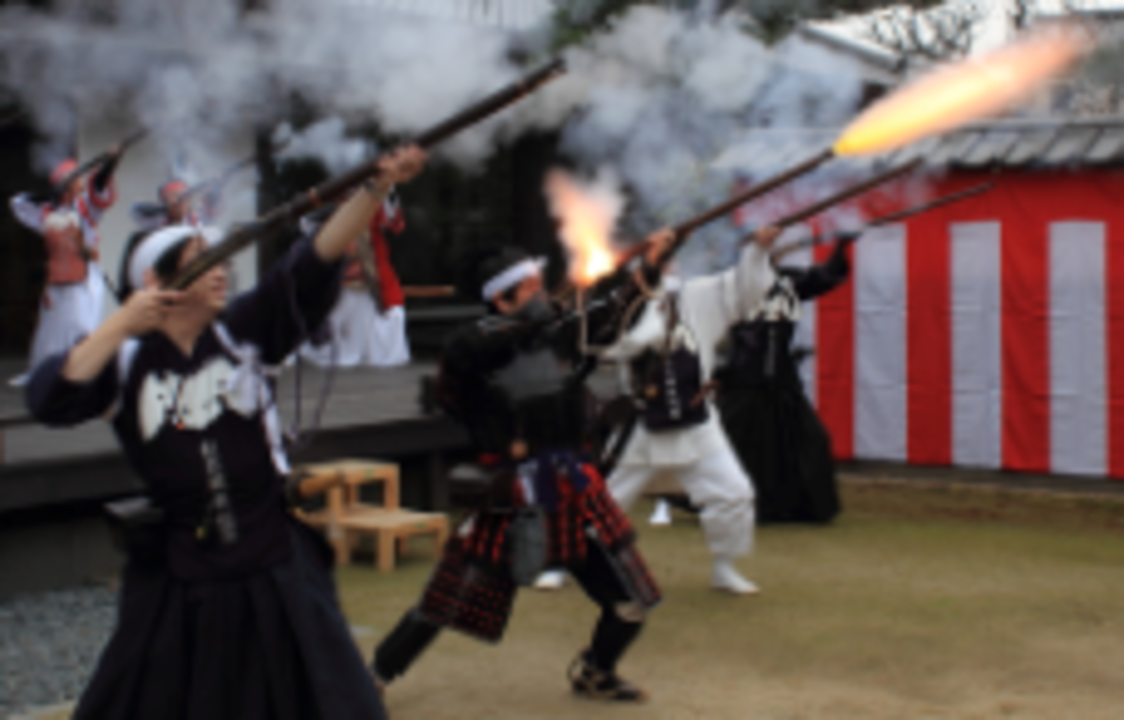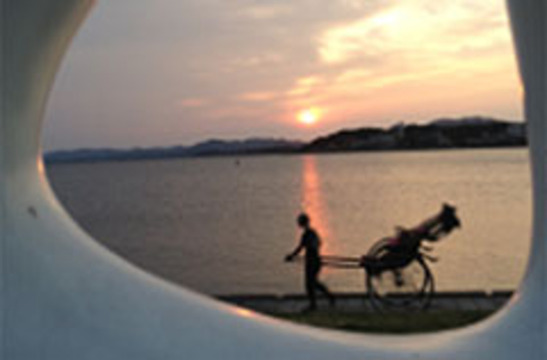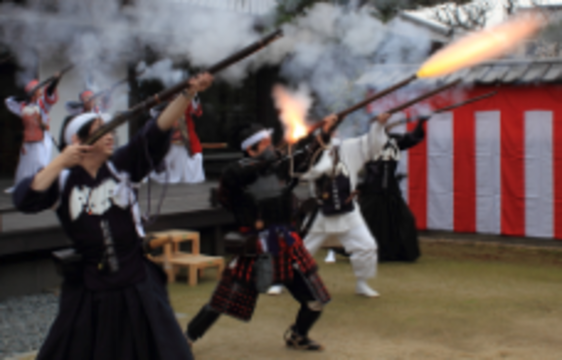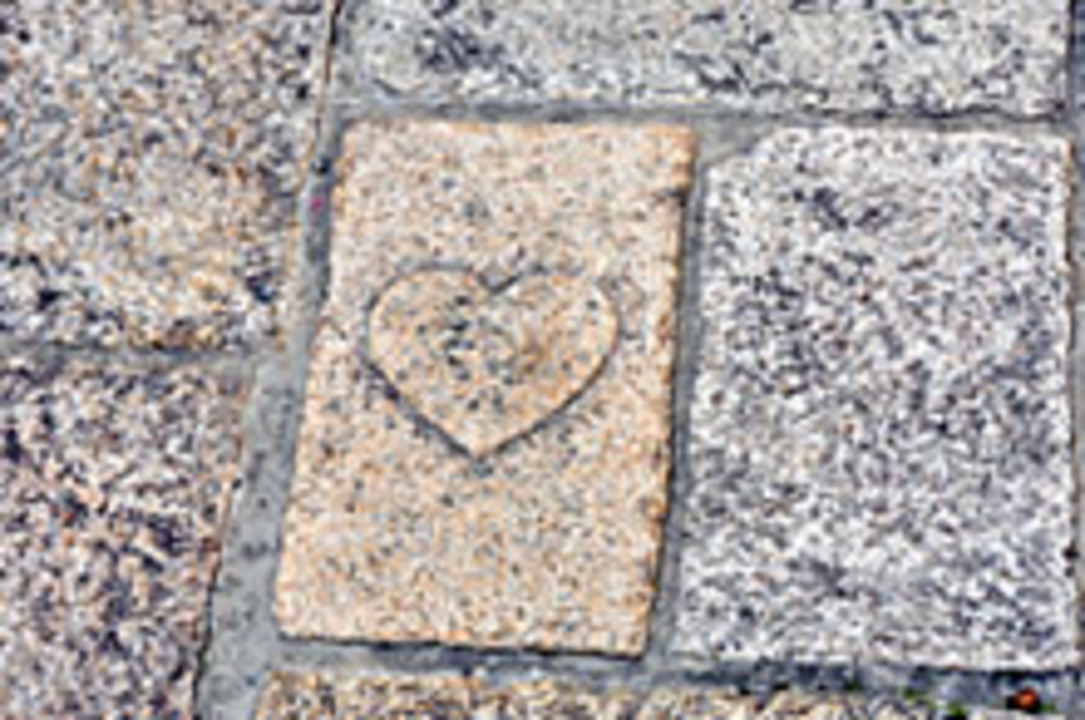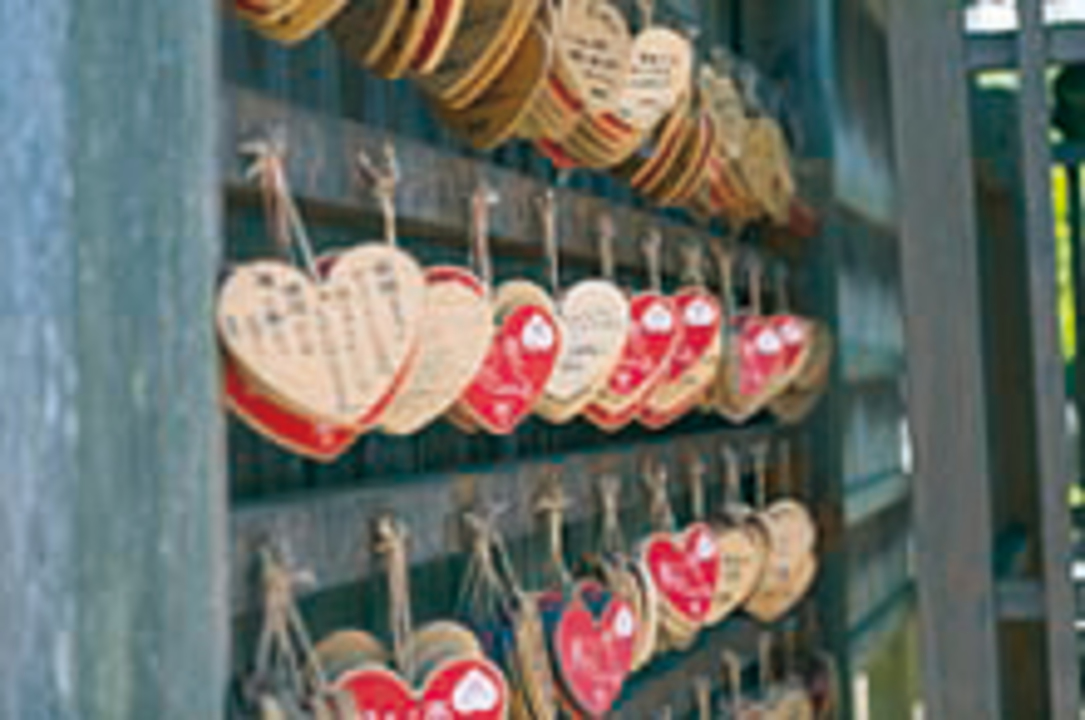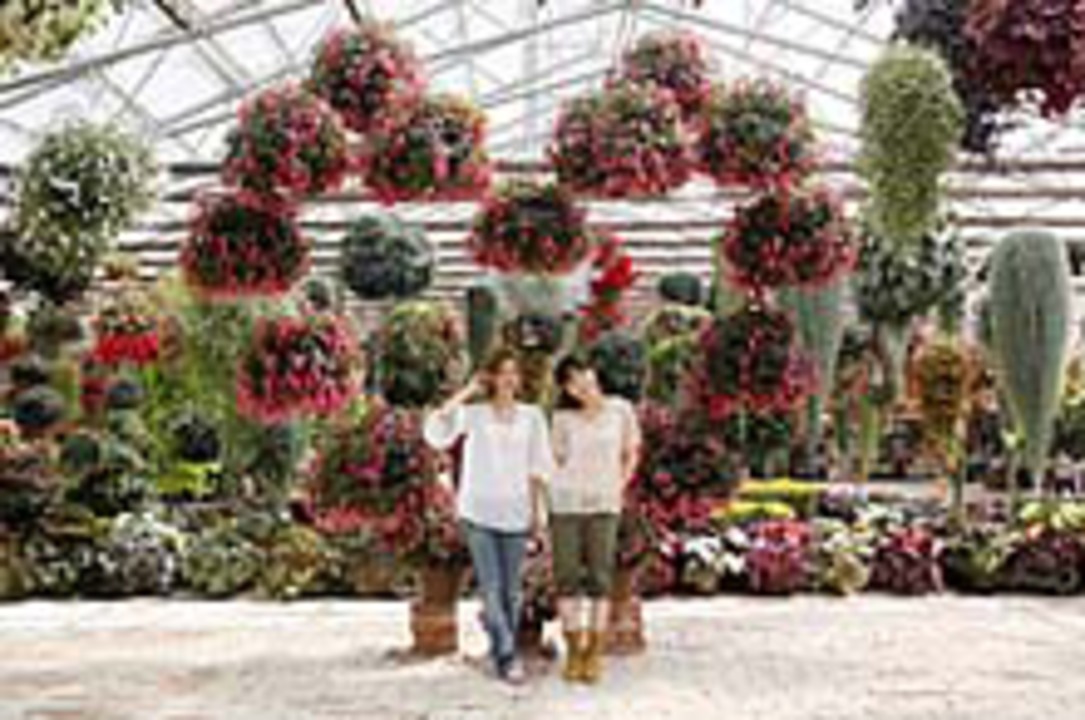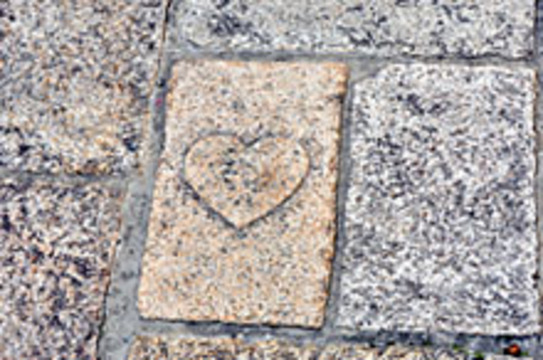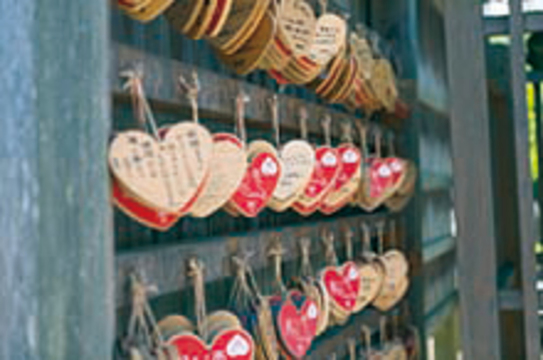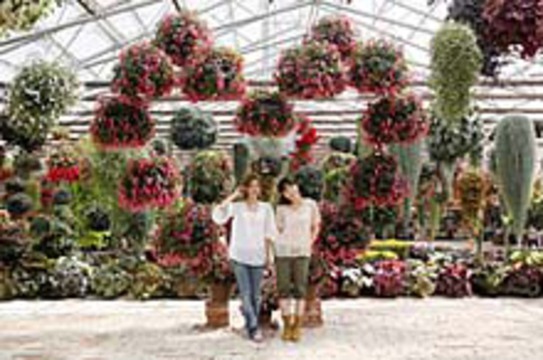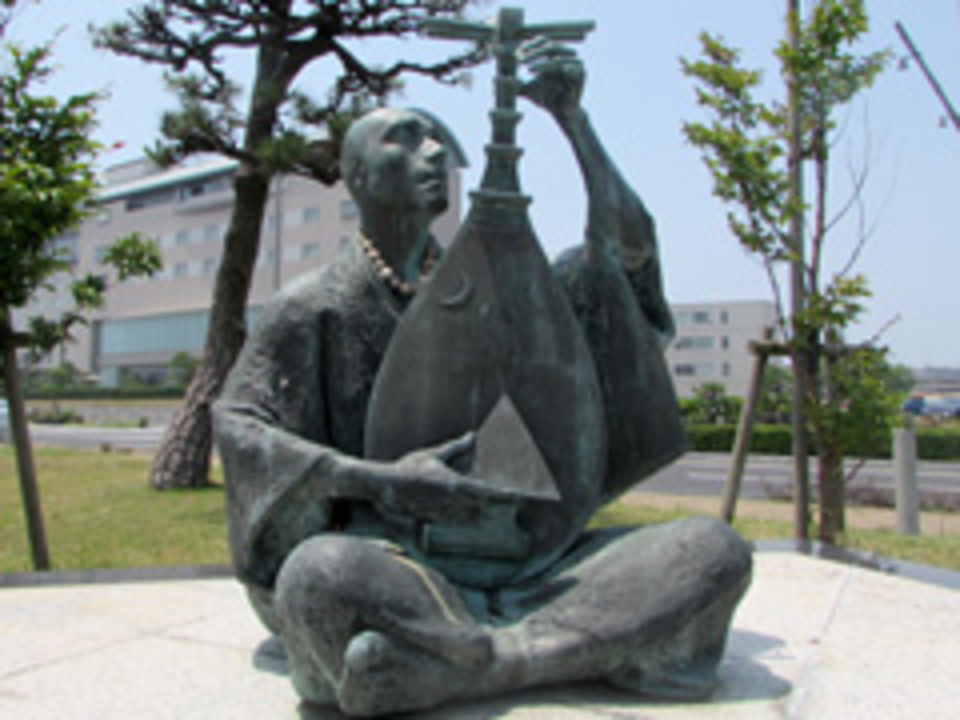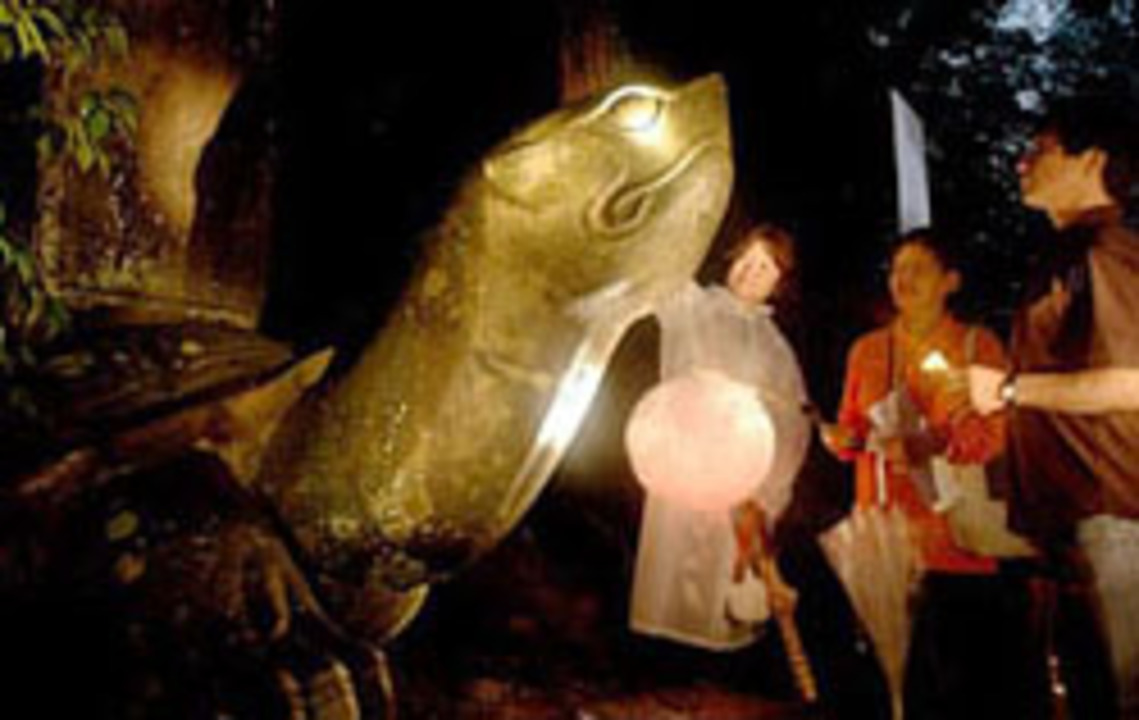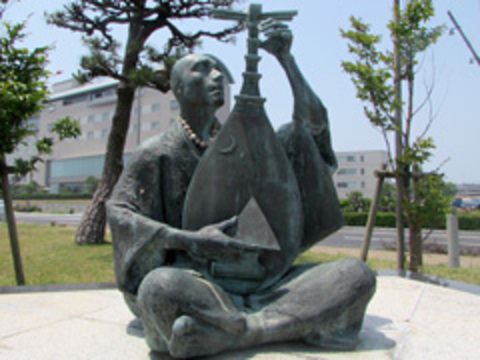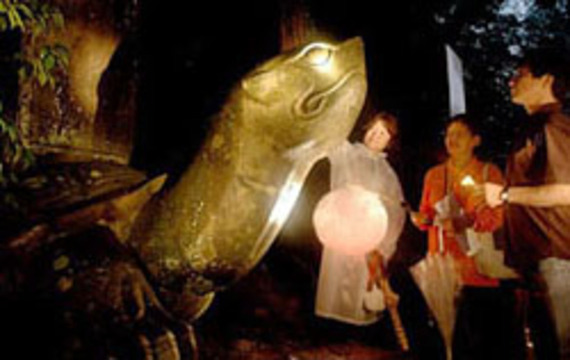Culture
Matsue is proud to retain a thriving culture reminiscent of various periods of its past. In its over 400 year history, the castle town atmosphere and natural scenery have remained consistent, while the art and customs of the people have continually developed. As an International City of Culture and Tourism, Matsue is a place visitors come to find Japanese culture as they’ve always dreamed of encountering it.
City of Water – 水の都
With Japan’s fifth largest lake, Lake Nakaumi, and seventh largest lake, Lake Shinji, to the east and west sides of the city, as well as the Sea of Japan to the north, Matsue is bordered by three bodies of water. However, the title Mizu-no-Miyako (City of Water) is also due to its water scenery within the city. The Ohashi River, bisecting the city centre, flows from Lake Shinji to Lake Nakaumi, and canals have been integrated in the north and south sides of the city centre since its earliest days. Most notably, the moats around the castle remain largely unchanged, and the Horikawa Sightseeing Boat is one of the most quintessential views of Matsue.
You can also take a Sunset cruise to enjoy the famous evening scenery of Lake Shinji, or enjoy the quaint view of shijimi clam fishers on their boats in the morning. Both lakes are included on the Ramsar List of Wetlands of International Importance, as they are home to many migratory birds in winter. Also, Matsue is home to many natural hot springs [See Enjoy Matsue].
You can also take a Sunset cruise to enjoy the famous evening scenery of Lake Shinji, or enjoy the quaint view of shijimi clam fishers on their boats in the morning. Both lakes are included on the Ramsar List of Wetlands of International Importance, as they are home to many migratory birds in winter. Also, Matsue is home to many natural hot springs [See Enjoy Matsue].
City of Tea and Wagashi
Thanks to Lord Matsudaira Harusato (a.k.a. Fumai)’s passion for the tea ceremony, Matsue is rich in tea culture, and home to one of the three largest tea gatherings in Japan [See our Calendar]. Although the tea ceremony is very popular here, you can casually enjoy matcha (powdered green tea) at many shops and restaurants throughout the city, as well as at historic tea houses like Meimei-an and Kangetsu-an or in Gessho-ji Temple.
Matcha is traditionally accompanied by wagashi (Japanese sweets). Today, along with Kyoto and Kanazawa, Matsue is one of the three most famous producers of wagashi, and many visitors enjoy the original sweets crafted by local masters, or try their hand at making them themselves at workshops. Please find more information in Enjoy Matsue, and watch this video for more about Matsue’s tea and wagashi culture.
Matcha is traditionally accompanied by wagashi (Japanese sweets). Today, along with Kyoto and Kanazawa, Matsue is one of the three most famous producers of wagashi, and many visitors enjoy the original sweets crafted by local masters, or try their hand at making them themselves at workshops. Please find more information in Enjoy Matsue, and watch this video for more about Matsue’s tea and wagashi culture.
City of Tradition
Matsue prides itself on retaining the atmosphere of the Edo era, a time of peace when both samurai and common people filled the bustling streets and enjoyed commerce and entertainment. In addition to preserved historic areas like Matsue Castle and Shiomi Nawate as well as preserved tastes and culture such as tea and wagashi, it is also common to see ladies walking around in kimono, or samurai walking around in armour near the castle. If you are lucky, you might even spot a ninja or two.
The Matsue Wakamusha Troupe of young warriors is happy to pose for pictures, and the Matsue Castle Rifle Troupe has regular performances on the third Sunday of every month at the Matsue History Museum, practicing drills with real Edo period antiques and gunpowder. With the help of rental kimono from Karakoro Art Studio you too can fit in with the castle town setting, and during castle festivals you might also have a chance to dress up in samurai armour.
The Matsue Wakamusha Troupe of young warriors is happy to pose for pictures, and the Matsue Castle Rifle Troupe has regular performances on the third Sunday of every month at the Matsue History Museum, practicing drills with real Edo period antiques and gunpowder. With the help of rental kimono from Karakoro Art Studio you too can fit in with the castle town setting, and during castle festivals you might also have a chance to dress up in samurai armour.
City of En-musubi
This region is home to many legends about deities and their love lives, and it is also home to the annual meeting of 8 million deities to discuss fate binding—especially that of matchmaking. In addition to many power spots for good luck in meeting one’s soul mate, such as Yaegaki Shrine and Tamatsukuri-yu Shrine, there are also many En-musubi spots throughout Matsue, such as the pink mailbox at Karakoro Art Studio. Other spots for En-musubi are more subtle and you’ll have to keep an eye out for them, such as the pink hearts in the pavement around the Kyomise Shopping District, and a heart in the natural grain of the wood in one of the pillars of Matsue Castle.
Local restaurants provide lucky En-musubi meals or desserts with the fortuitous red (or pink) and white colour combinations, and in the rainy season, the locals celebrate Enishizuku (drops of En, the rain that binds everyone together) with En-musubi themed cocktails at bars around town. Although many of the good luck spots and items are frequented by young singles, En can be your ties with anyone, such as children, friends, or business partners. Having good En will ensure many harmonious relationships.
Local restaurants provide lucky En-musubi meals or desserts with the fortuitous red (or pink) and white colour combinations, and in the rainy season, the locals celebrate Enishizuku (drops of En, the rain that binds everyone together) with En-musubi themed cocktails at bars around town. Although many of the good luck spots and items are frequented by young singles, En can be your ties with anyone, such as children, friends, or business partners. Having good En will ensure many harmonious relationships.
City of Ghost Stories
One of Lafcadio Hearn's most famous works is Kwaidan: Stories and Studies of Strange Things (1904), and it chronicled many ghost stories from around Japan, such as the famous story of Hoichi the Earless (Mimi-nashi Hoichi), whose statue can be found in Matsue Shinjiko Onsen, by the shore of Lake Shinji. His interest in the supernatural was also evident in Glimpses of Unfamiliar Japan (1894), in which he described many of the local haunts in Matsue. This includes the bridge nearby Matsue Castle leading to Fumon-in Temple, where a sceptical samurai brazenly sang a song that a ghost hated and later discovered the ghost had taken out her rage on his family.
Ghost tours (in Japanese) are offered multiple times a year to tell the stories Lafcadio Hearn recorded in the places where the stories were said to take place, such as the story of the giant stone tortoise in Gessho-ji Temple, who would abandon the graves he was supposed to be guarding to go wreak havoc by the temple pond. Visiting these haunted places is especially popular in summer because it will give you the chills to help you cool off! More info, in Japanese, on Matsue Ghost Tour.
Ghost tours (in Japanese) are offered multiple times a year to tell the stories Lafcadio Hearn recorded in the places where the stories were said to take place, such as the story of the giant stone tortoise in Gessho-ji Temple, who would abandon the graves he was supposed to be guarding to go wreak havoc by the temple pond. Visiting these haunted places is especially popular in summer because it will give you the chills to help you cool off! More info, in Japanese, on Matsue Ghost Tour.
